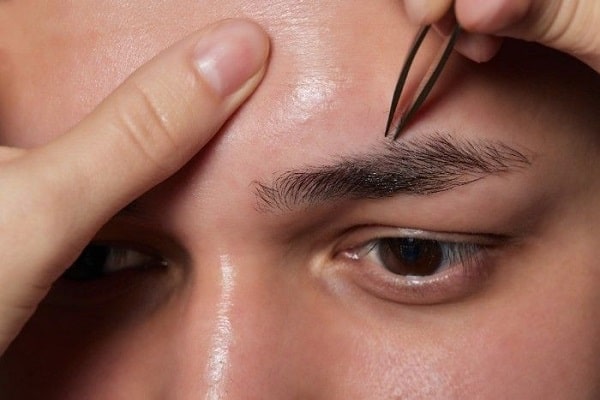Types Of Hair Removal: Understand More About Each One
If you prefer to remove your hair, enter the post to check out a little more about the different types of hair removal. Our fur is not an enemy, quite the opposite: all mammals rely on them to help regulate body temperature and protect the skin.
Throughout the natural evolution of human beings, however, they gradually lost part of their biological importance (we started to wear protective clothing, for example) and became, more and more, an “aesthetic taboo”.
Some say that fur is disgusting and unhygienic, which is not true. In any case, however, while we grow some of them (like hair, eyelashes and eyebrows), most people (especially women) prefer to get rid of others (like leg, armpit and pubic).

If this is your choice, know that there are different types of hair removal and that you can more or less suit each of them. Keep reading the post to learn about it!
A chat about hair
Hairs are structures formed mainly by keratin, and that develop in hair follicles (which, in turn, are concentrated in the epidermis, the most superficial layer of the skin).
While its roots are embedded in the skin, the stems go beyond the surface and are therefore the visible part.
Although the main function is temperature regulation and protection, hair is not all the same — and it is easy to understand this when we remember that hair is too (these don’t usually bother you so much, do they?).
Hair is present throughout the body and its structure is extremely similar, but they vary according to factors such as anatomical region, gender, age, hormones and function. As the ages progressed and society changed, some became less important than others: while removing leg hair, for example, would hardly do any harm, nose hairs, eyebrows and eyelashes would be sorely missed.
It is essential, however, to demystify the subject, as many still associate the presence of hair with neglect or lack of hygiene, which is not true. The main motivations for hair removal are, most of the time, purely related to aesthetics, not hygiene — and this is also a trend.
The beard, for example, has gone through different moments ranging from ostracism to stardom, depending on the generation. While, in the 20th century, a smooth face was synonymous with hygiene and civility, today it has returned to be highly rated, as well as barbershop professionals, who began to be hired much more to stylize it and keep it in an interesting format than to eliminate it completely.
When we talk about women, however, the subject seems to become even more taboo. Due to gender stereotypes, men have the right to show off their body hair, while women are practically forbidden to do so, associated with the idea that those who keep their hair (especially in regions such as the armpits and legs) are “less women”, which should not exist.
But why are we talking about all this in a post about types of hair removal? Because living in society is always remembering to think more deeply about standards, so that we make decisions based on our own choices, and not just following false pre-established truths.
In the same way that shaving shouldn’t be an imposition, this text definitely doesn’t mean you shouldn’t do it: this decision is absolutely personal and shouldn’t be judged for either side – and it’s precisely with your greatest comfort in mind, if you choose for hair removal, that this post exists and explains how each of the most common current methods works.
Types of hair removal
While some have a longer-lasting effect, others are less invasive and painful. Some can be performed at home, by yourself, while others depend on specific locations and specialized professionals. It’s worth understanding to find what best suits your lifestyle and your own limits.
Waxing
One of the most used methods, waxing is time-consuming and somewhat painful, while having the advantage of being relatively long-lasting: the hair only starts to grow back about fifteen days after the procedure.
It can be done at home, as long as you have the right materials (and the courage to face the pain of pulling the wax out yourself or relying on a friend or family member to do it), but it is commonly performed by professionals, either by service at home or in beauty salons, and is usually used mainly on the legs, armpits, chest and intimate regions.
This type is further divided into two techniques: hot wax and cold wax. The first is more common, mainly because the heat helps to dilate the pores, facilitating the removal of the hair and, consequently, decreasing the pain. Its main disadvantage is that the process can potentiate the darkening of the skin.
Cold waxing, in turn, is more painful and aggressive to the skin, which can stimulate dryness, but it brings slightly longer-lasting results and reduces the risk of ingrown hairs.
Hair removal with thread
This ancient technique is quite common for facial waxing, such as removing upper lip hair and aligning the eyebrows. Despite being quite painful, it has advantages such as durability, the elimination of dead skin cells and the fact that it is not aggressive to the skin, in addition to not causing allergies.
In addition, it is a relatively time-consuming and detailed procedure, which must be performed by specialized professionals.
Hair removal with tweezers
Tweezers are another hair removal method that removes the hair from the root, and is generally used in small areas, such as the eyebrow, as it offers a greater level of detail. It is a lengthy and somewhat painful procedure, which should preferably be performed by a specialized professional, as it is important to be careful not to break the thread when pulling it. It is not uncommon, however, for some people to perform it alone at home.
Depilation with electric device
Most commonly used for leg hair removal, electrical appliances are very practical for removing hair yourself at home. This method, however, is quite painful and can potentiate the ingrown hairs — although it removes them from the root and does not affect the skin’s protective layers.
Contrary to what is recommended for waxing, in this case the ideal is to remove the hairs that are still quite short, because this reduces the pain and prevents them from breaking in the process. Another point that must be taken into account is that, for reasons of hygiene and safety, the ideal is that the device is for personal use and not shared.
Laser waxing
Also known as permanent hair removal, laser hair removal is indicated for all areas of the body and should only be performed in specialized clinics. Several sessions are necessary, which remove the hair gradually through the action of a light that acts directly on the follicle, destroying its matrix and preventing it from growing again.
As the laser identifies hairs and attacks them through melanin, however, blonde hairs are much more difficult to eliminate and, therefore, people with this hair color will hardly be able to succeed in the procedure – it is worth, however, evaluate case by case in specialized networks.
The technique, which is usually less painful than those mentioned so far, is more costly in the short term (it is necessary to remember, however, that its effects are definitive) and contraindicated for pregnant women and people with injuries or a history of injuries and diseases of the skin.
Razor hair removal
We now come to a homemade, practical, inexpensive and extremely popular method: shaving with a razor. The technique is not painful and cuts the hair close to the skin, without interfering with the root – which makes it short-lived. Although not aggressive to the skin, it can irritate the most sensitive and cause redness and itching.
Read Also: Benefits Of Waist Beads; What Are They Used For?
Shaving cream
Just like razors, depilatory creams are painless and not long-lasting, as they do not pull the hair from the root. The substance used in the formulas works by breaking the structure of the thread, in order to eliminate the rods and leave the skin smooth. However, it can cause sensitivity and allergies, so it is recommended that the cream be tested on a small area of skin before full application.



![Mustard Oil and Its Effects on Hair [Radiant Hair Secret] 5 Mustard Oil and Its Effects on Hair [Radiant Hair Secret]](https://naijaxtremefashion.com/wp-content/uploads/2024/01/mustard-oil-and-its-effects-on-hair-1_11.jpg)
![How To Get Bigger Hips & Buttocks Without Surgery [Home Remedy] 6 How To Get Bigger Hips & Buttocks Without Surgery [Home Remedy]](https://naijaxtremefashion.com/wp-content/uploads/2023/09/how-to-get-bigger-hips-and-buttocks-img_1191.jpg)

